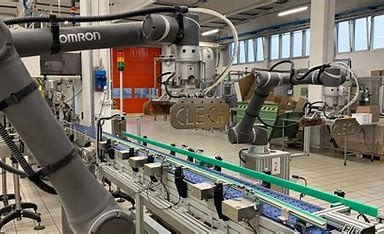TSN Technology Provides Plant Floor Connectivity

When it comes to discussions around connected industries, a number of buzzwords are generally included, making it seem like an endless number of high-tech devices are required to make factories smart. However, at the core of most digital transformation journeys lies an open high-speed industrial network architecture. In effect, future-oriented operations need a suitable data flow to connect different parts and players within an enterprise to generate data-driven, actionable insights and offer advanced control.
Having every single asset communicating with the enterprise is the ultimate goal, at least in theory. However, in practice this may not seem feasible, because of the time and cost involved as well as company specific cybersecurity protocols. In most cases, it is advisable to ‘start small’, focusing on enhancing the connectivity of a machine or process that can deliver a quick return on investment (ROI).
An example could be providing remote access to a machine on the shop floor, enabling operators to monitor or control different elements. For example, cameras and other internal sensors, not just the controller, can be installed and connected to receive notifications in case of anomalies as well as interact with assets to maximize uptime, productivity and efficiency. Once this project is successfully completed, then it is possible to move on to the next area, identifying where more value could be added to a process.
Connecting the dots
This approach is therefore ideal for small to medium enterprises, as it offers a sustainable pathway to drive continuous improvement and competitiveness in a fast-paced marketplace. When implementing a stepwise strategy, it is fundamental to select suitable solutions that support it by offering the level of flexibility and scalability required. More precisely, specifying a network technology for future machines that can support interoperability and interconnectivity on small and large scale is key.
Time Sensitive Networking (TSN) is highly recommended when embarking on a digital transformation journey and modernizing the architecture of your machines. By doing so, companies can make sure they will be able to support both information technology (IT) and operational technology (OT) communications on the same network while delivering reliable, unmatched performance in data sharing. This means that they will be able to smoothly integrate any asset they want at any stage of their digitalization.
As the first commercially available open industrial Ethernet that incorporates TSN and can boast a wide and rapidly expanding range of compatible products, CC-Link IE TSN is ideal. This solution is a future-oriented platform for industrial communications that can help companies create Connected Factories. As an open technology, it offers maximum compatibility and interoperability, so that devices, machines or lines can be connected to each other, regardless of their vendor. This capability further optimizes flexibility and costs for small to medium businesses.
By specifying CC-Link IE TSN to futureproof operations, companies can make sure they are utilizing the most suitable backbone to support any application related to the Connected Industries, such as remote control, IIoT and digital twins. In effect, they can benefit from a considerable leap forward in realizing smart operations where data-driven insights are used to improve productivity, efficiency, flexibility and responsiveness. Even more, businesses can do this in a stepwise approach making targeted investments in terms of cost, time and resources while considerably enhancing their competitiveness.
Time-Sensitive Networking makes it easy to create futureproof Connected Factories and maximize the advantages that they hold.





